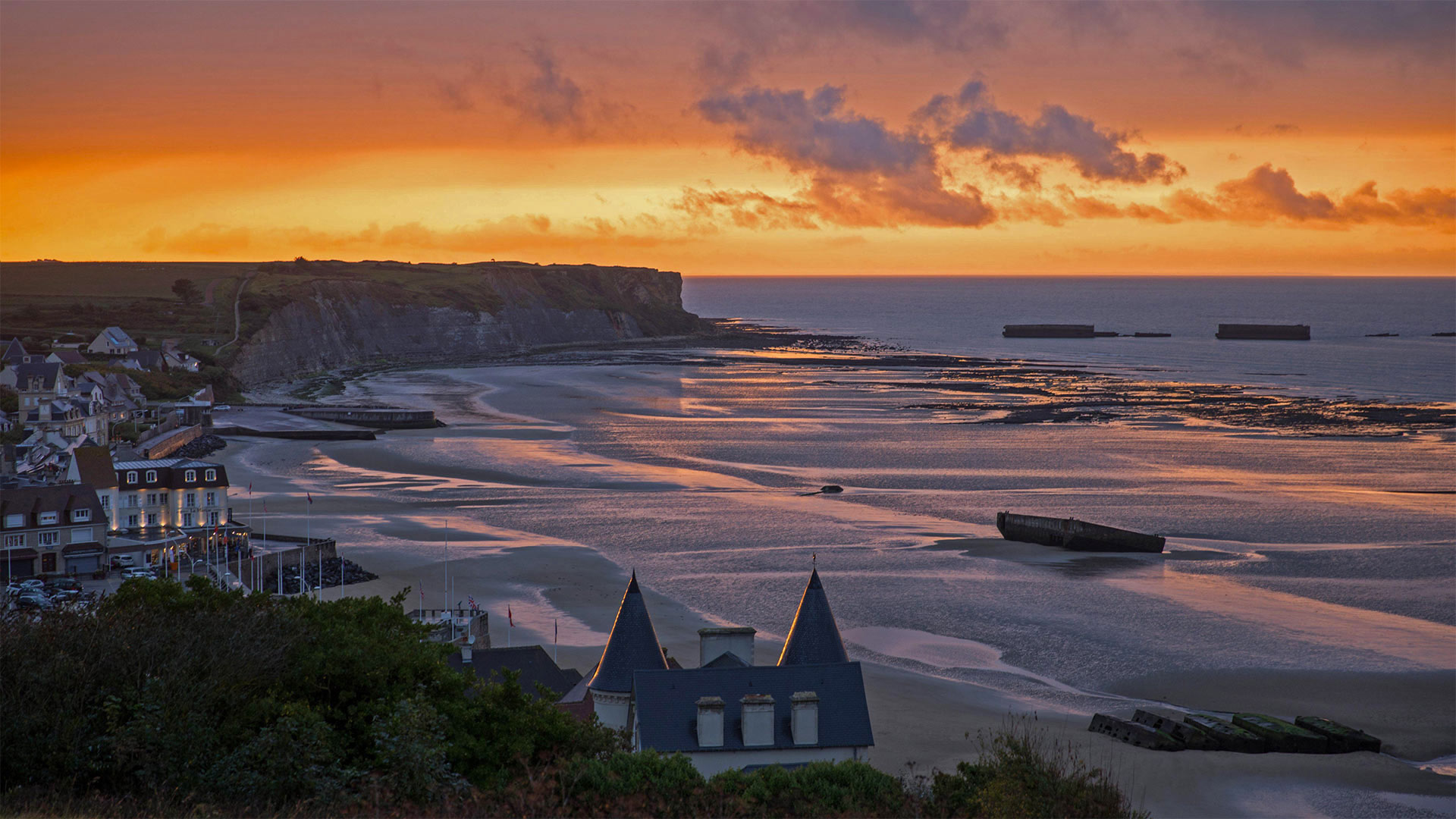阿罗芒什莱班的桑树港,法国诺曼底 Mulberry Harbour in Arromanches-les-Bains, Normandy, France (© agefotostock/Alamy)

阿罗芒什莱班的桑树港,法国诺曼底 Mulberry Harbour in Arromanches-les-Bains, Normandy, France (© agefotostock/Alamy)
On this shore, history was made
As the sun sets on a beach in Normandy, France, what appear to be working barges and boats offshore are actually the remnants of Mulberry Harbours, temporary portable harbors created by the Allies during World War II. Their story begins 47 years ago today, on D-Day, when the first of the Allied troops touched down on the Nazi-occupied beaches at Normandy. After the Allies successfully held the beachheads, the Mulberries were towed into place so the artificial harbors could provide the port facilities necessary to offload the thousands of men and vehicles, and tons of supplies necessary to sustain the effort to drive the Germans out of France.
Two Mulberry Harbours were built for D-Day. The one known as Mulberry A was constructed off Omaha Beach to aid US forces. Mulberry B was built here, off Gold Beach at Arromanches to supply British and Canadian troops. Mulberry A was destroyed in a storm just a few days after it was built, but Mulberry B was operational for 10 months after the landings, providing crucial infrastructure to the Allied operation. The innovative feat of military engineering enabled the largest seaborne invasion in history, which in turn laid the foundations of the Allied victory on the Western Front.
在这片海岸上,创造了历史
当太阳落在法国诺曼底的一个海滩上时,看似在海上工作的驳船和船只实际上是桑葚港的残余物,桑葚港是二战期间盟军建立的临时便携式港口。他们的故事开始于47年前的今天,也就是诺曼底登陆日,当时盟军的第一支部队在诺曼底登陆了纳粹占领的海滩。盟军成功占领滩头阵地后,桑葚被拖到适当的地方,这样人工港口就可以提供必要的港口设施,卸载成千上万的人和车辆,并提供数吨必要的物资,以维持将德国人赶出法国的努力。
为D日建造了两个桑葚港。这座名为“桑葚A”的建筑是在奥马哈海滩附近建造的,目的是帮助美军。Mulberry B是在阿罗曼奇斯的黄金海滩附近建造的,为英国和加拿大军队提供补给。桑葚A号在建成后几天就在暴风雨中被毁,但桑葚B号在登陆后的10个月内仍在运行,为盟军的行动提供了至关重要的基础设施。军事工程的创新成就促成了历史上最大规模的海上入侵,进而奠定了盟军在西线取得胜利的基础。
评论已关闭